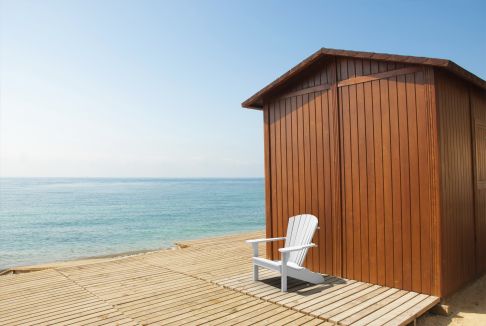The Power of Recycled Type-2 Plastics

Did you know there are 1,500 water bottles consumed per second in the US? That's second to the number one beverage, soft drinks. Fortunately, most plastic water bottles are fully recyclable. Unfortunately, only one out of every five bottles is being recycled, resulting in packed landfills and polluted ocean waters. But it's more than just plastic bottles: it's everything plastic.
The Truth About Plastics
Plastic doesn't break down; it does photo-degrade. In other words, plastic degrades by being exposed to sunlight, turning it into smaller compounds that never fully disintegrate. These small pieces of plastic are called polymers or nurdles. Even as the so called "biodegradable" plastic breaks down, it reverts back into the little miracle polymers that formed the plastic in the first place.
Plastics and Our Environment
Where does the plastic go? A lot of it will be buried in landfills and will never dissolve. According to oceanographer Curtis Ebbesmeyer, the world's leading flotsam expert, plastic will continue to pollute and poison our waters. Over the last 50-years, plastic particles have been collecting in the Pacific Ocean. Ebbesmeyer calls it the great "Pacific Garbage Patch." It's not really a patch; it's more like an island or continent which is affecting so much of the ecosystem. Sea life, such as jellyfish and small organisms, are digesting these plastics. Marine animals are often found entangled or trapped in the plastic debris, making it very difficult for them to move around freely or feed themselves, resulting in slow and agonizing deaths.
Types of Plastics
What can we do about it? Progress has been made. Although there are many types of plastics, not all are made to breakdown for recycling. There has been a way created to label plastic containers using a series of cryptic markers that helps identify the plastic type. It's important to keep the same types of plastics together. If not, the wrong type of plastic will damage the whole melt. For example, Type 1 and 2 plastics are the most recyclable while Type 7 plastic has very little recycling potential. Plastic bottles and milk containers are Type 1 and 2; they can be dissolved resulting in over 90% pure plastic.
Putting Plastics to Practical and Commercial Use
Another way to save our landfills and waters is to reuse plastics for household purposes. If you have plastic bottles, try to refill them rather than throwing them out. When you are shopping, purchase glass or paper items rather than plastics. Many stores have been encouraging people to reuse their plastic grocery sacks as well as bring cloth bags from home. When you think about the fact that plastic was created to last forever, it makes sense to create products that will last. Products that can be designed to make our life better and keep the earth cleaner seem ideal. Fortunately there are companies like Nex-Terra and Poly Products that are developing great ways to use recycled plastic bottles and milk jugs to make beautiful outdoor products.
Nex-Terra commercial products uses only recycled Type-2 plastic material in their manufacturing. Type-2 recycled material is 97% pure, which means that it can be recycled a second time. Nex-Terra produces well constructed durable products such as towel valets, perfect for any commercial site, gym or spa. They also make waste containers for restaurants and park facilities. Their planter boxes and park benches are perfect for outdoor areas and malls. Their recycled storage enclosures are an earth-friendly option for managing recyclables.
The best part is that the recycled plastic material is impervious to insects, moisture and mold, meaning it will not rot, splinter or become dinner for pests as wood often does. Added UV inhibitors keep its color even while bonding agents create complete molecular linkage for the finest structural reliability.
Because HDPE recycled plastic products are made with purified polymer, they have outstanding resistance to corrosive matter such as oil and fuels, insects, fungi and salt spray. They do not absorb moisture; therefore, they will not rot, splinter, or crack. These outdoor furniture products require no water proofing, painting, staining, or similar maintenance when used in any exterior applications.
All of these examples can be utilized to improve the environment and save on waste. We must make a conscious choice to recycle. Although we are making progress, companies must be more responsible and willing to put in the time and effort to help raise awareness of our planets predicament.

